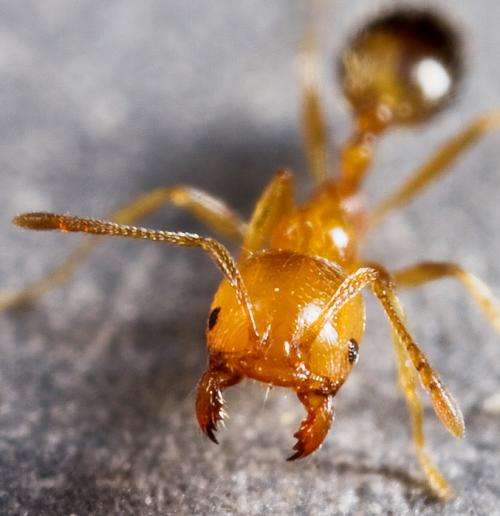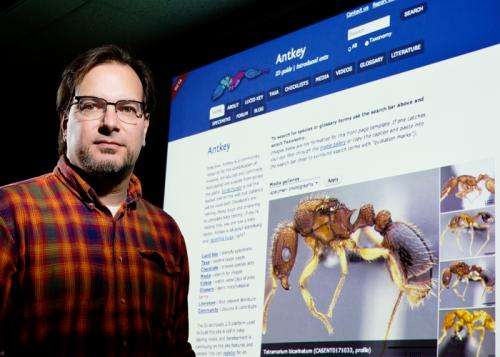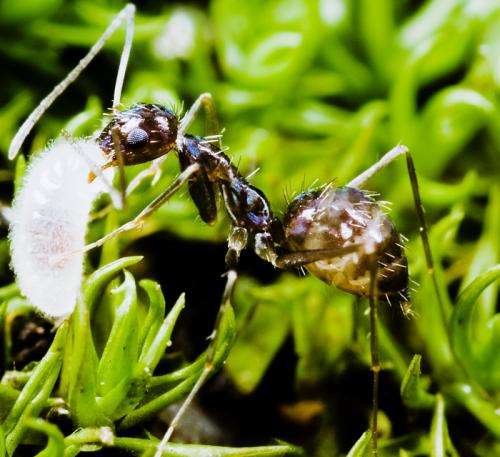Antkey’s distinctive photographs make it easy to identify an ant’s most obvious features, like the mandibles of this Monomorium desctructor. Credit: Eli Sarnat
(Phys.org)—Researchers have created an interactive website, called Antkey, which includes more than 1,150 images and 70 video clips to help users determine an ant's identity from more than 100 invasive and commonly introduced global species.
According to the U.S. Chamber of Commerce, $1 billion in cross-border commerce between the United States and Mexico takes place each day. And as goods flow into the U.S., pests can hitch a ride, setting up house and harming the agricultural economy.
The U.S. Department of Agriculture inspects cross-border commerce for pests. If an ant infestation is detected, the current protocol calls for sending a sample to the U.S. Entomological Collection in Washington, D.C., where curators decide if the ants pose a threat.
The process takes time and costs money, but the economic costs are high if items carrying known pests cross into the U.S.
Professor Andy Suarez facilitated the creation of the Antkey website, pictured behind him, which makes ant identification easier for non-specialists. Credit: L. Brian Stauffer
Andy Suarez, a University of Illinois professor of entomology and of animal biology, developed Antkey with postdoctoral researcher Eli Sarnat. Their goal was to help non-specialists in quarantine and border facilities around the United States make the process of ant identification faster and more efficient.
Because typical taxonomic keys made for specialists use scientific jargon and specify features that can only be seen under a microscope, it is often hard for non-specialists to identify ant species.
Antkey photographs, like this one of the Paratrechina longicornis worker with a larva, help viewers identify the ants they encounter. Credit: Eli Sarnat
However, Antkey uses a more interactive system called a "lucid key" to make the process easier.
"With a lucid key, you could put in two or three different descriptive pieces of information and then all of the species in the key that don't match that description are removed and the key changes to show only what's left," Suarez said.
The key then asks specific questions that help users differentiate between the remaining species.
As researchers learn more about the invasive ant species becoming established in the U.S., Antkey will continue to grow and make it even simpler for users to identify the ant invaders.
"In the future, by incorporating more resources like video and pictures and making the key simpler, in theory, anyone who is an enthusiast or a concerned farmer or homeowner can actually figure out what all the ants that might be infesting their property are," Suarez said.
Provided by University of Illinois at Urbana-Champaign

























